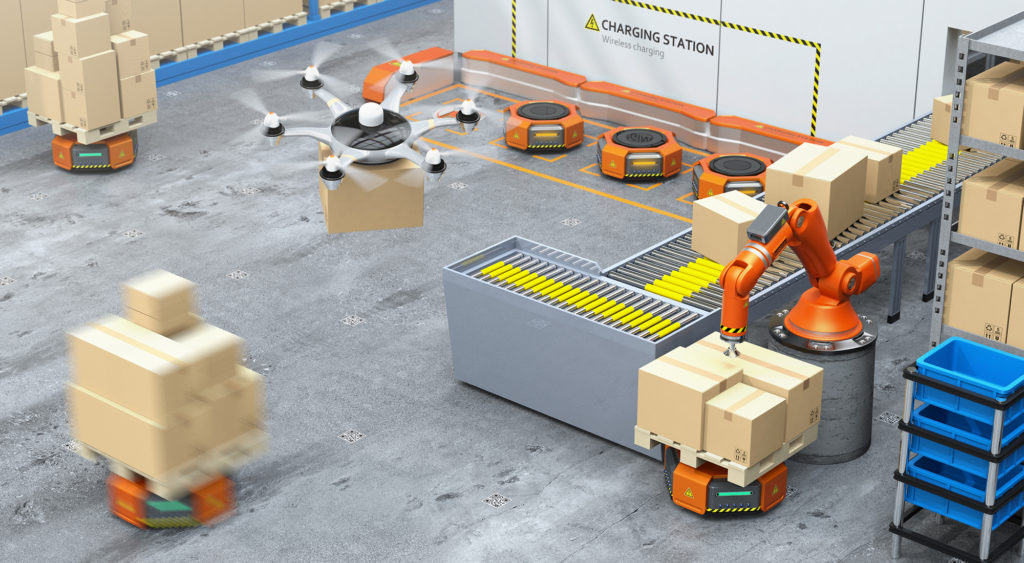Behind the Buzzword: The Autonomous Supply Chain

The drive for digitization is everywhere. What does that mean for supply chain planning? A number of companies and supply chain technologists are pursuing a vision they describe as the Autonomous Supply Chain—a supply chain that is largely self-learning, adapting, and holistically focused on continuously meeting the needs of consumers and customers.
Suffice it to say, the concept of digitizing the supply chain doesn’t just sound cool. It’s also poised to offer tremendous value to those companies that achieve it, maximizing revenue and margins while removing costs and simplifying planning activities across the value chain.
You may shudder at the thought or dismiss it out of hand—after all, a recent McKinsey study found that the average supply chain has a digitization level of just 43%. Have the futurists gotten ahead of themselves? Will any of those benefits ever really materialize?
Based on my experience helping retail clients install a supply chain process I call Flowcasting to plan and manage the flow of inventory from supplier to consumer, I would say that many benefits are already here. In fact, I expect that the autonomous, self-learning supply chain will soon become the norm. In this edition of Business Talent Group’s Behind the Buzzword series, I’ll explain why.
What is an autonomous supply chain?
The vision behind the end-to-end, autonomous supply chain is to leverage data and technology to anticipate consumer demand for each item that a retailer sells—then locate, load, and transport that item to the location where it’s needed, whether that’s a shelf on a store, a distribution center, or a customer’s home—all with little human intervention. To do that, an autonomous supply chain needs to know where all inventory and even all individual components are, at all times.
That may not yet be possible across all industries. But some of the technologies that are driving the development of autonomous supply chain systems are already powering huge advances. In particular, it’s now possible for retailers and their CPG partners to view a digital twin of their entire, extended supply chain within a single planning solution.
What’s a digital twin?
A digital twin is a complete model of the business, whereby all physical product flows, both current and planned, are digitally represented within the solution—a complete, up-to-date, real time view of their business, containing all projected flows from supplier to consumer for an extended planning horizon of 52 or more weeks.
This enables what we often refer to as continuous planning. The process and solution re-plans and re-calibrates the entire value chain, digitally, based on what happens physically. Changes in sales, inventories, or shipments will result in re-forecasting and re-planning product flows—to stay in stock, flow inventory, and respond to real exceptions or unplanned events. The process, solution, and supply chain is self-learning.
The result is that it can manage the flow of information and trigger the movement of goods, digitally, on auto-pilot, a vast majority of the time—requiring planner input only when judgment and experience are needed.
When I think about how our clients use the Flowcasting process to plan, for instance, I would estimate that 95% of the product flows are initiated automatically (e.g., digitally) based on the solution interpreting what yesterday’s sales and inventory movements mean, and then re-adjusting, self-correcting, and altering current and planned product flows.
Furthermore, as part of one implementation, we worked with planners to semi-automate how the solution would handle certain exceptions based on what they learned during its initial pilot. It’s certainly not a stretch to think that, at some point, a machine learning algorithm could do that, too, and respond to these types of anomalies in order to enable the smooth and continuous flow of product.
What are the results?
Flowcasting is not a fully autonomous solution. But it is self-learning, self-correcting, and digitized. So what has it brought the retailers that have adopted it?
The highest in-stocks in company history, increased sales, improved inventory turns, reduced costs and, most importantly, happier customers.
Please understand I’m not talking about a Skynet scenario here. I firmly believe that supply chain planning solutions can largely become autonomous and self-learning, but will always require some human input for situations where intuition and judgement are required. But I’d argue this will be the exception and is also a form of a self-learning supply chain (e.g., people learn from experience).
The autonomous, self-learning supply chain is quite a vision. And, like all visions, it needs initial pilots and examples to move the ball forward, provide initial learnings, and help people understand what is and might be possible. Our recent retail implementations of Flowcasting have, we believe, helped the cause and should provide food for thought for any retailer.
So to the folks and companies pursuing this vision, I can only offer best wishes and the advice from Calvin Coolidge: “Press on. Nothing in this world can take the place of persistence”.
This post was adapted from Mike’s blog.
Get the Skills You Need
Thousands of independent consultants, subject matter experts, project managers, and interim executives are ready to help address your biggest business opportunities.